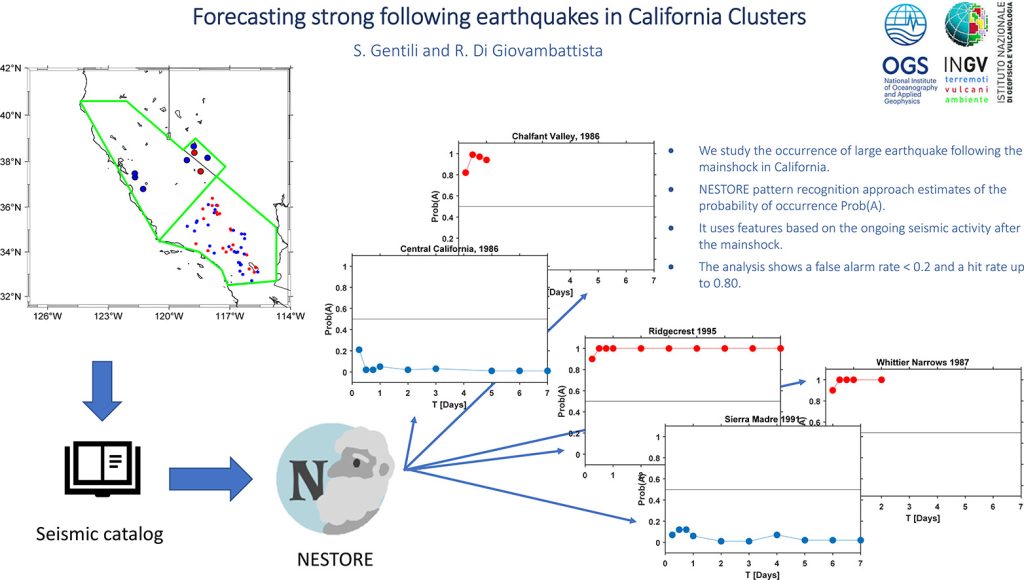When strong earthquakes occur, being able to correctly forecast the occurrence of subsequent large earthquakes is crucial for defining response plans and reducing further damage.
This is the focus of a study, recently published in the journal Physics of the Earth and Planetary Interiors, which used Artificial Intelligence for the analysis of seismic sequences.
Based on data and information from California seismic catalogues, the research, carried out by Stefania Gentili, National Institute of Oceanography and Applied Geophysics (OGS), and Rita Di Giovambattista, National Institute of Geophysics and Volcanology (INGV), developed a machine learning algorithm, called NESTORE, which estimates – after a strong earthquake – the probabilities of having large subsequent earthquakes.

“In our study, we used catalogues of earthquakes occurred in California, a very active seismic area, and therefore closely monitored and studied. NESTORE was able to correctly forecast the occurrence of strong earthquakes well in advance in 80% of the cases analysed, with a false alarm rate of less than 20%,” said Stefania Gentili, researcher at the Seismological Research Centre of the OGS.
The study is part of the “Analysis of Seismic Sequences for Strong Aftershock Forecasting” research project, led by the OGS and involving the INGV and the Institute of Statistical Mathematics – ISM (Japan), which is included in the 2021-2023 Executive Programme of bilateral science and technology cooperation between Italy and Japan.
The article published in Physics of the Earth and Planetary Interiors

